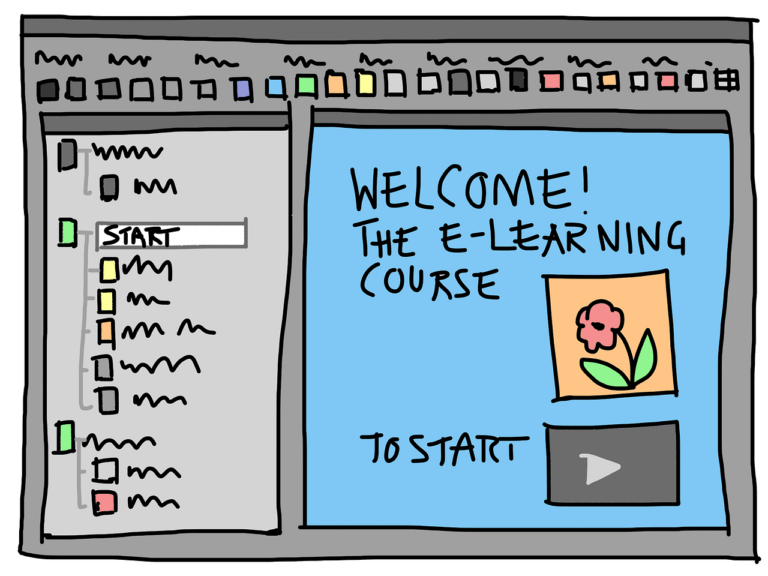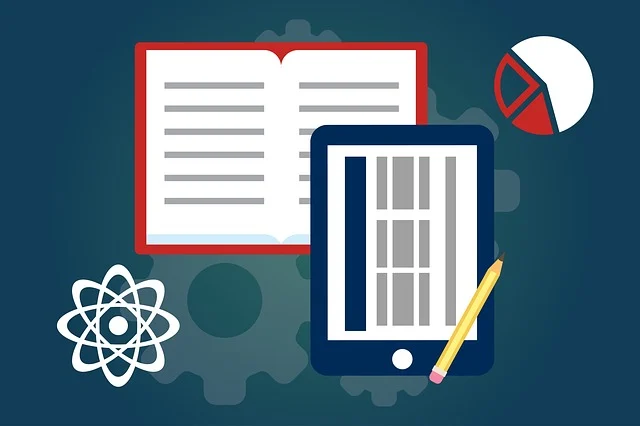5 Key Benefits of Using xAPI to Revolutionize Your E-Learning

In today’s fast-paced world, e-learning has become an essential tool for organizations to train their employees, educate their customers, and even reach out to new prospects.
However, traditional e-learning tracking methods have their limitations. They typically only track course completion, time spent, and quiz scores. As a result, organizations may not get a comprehensive understanding of their learners’ progress or their overall learning outcomes.
Fortunately, there is a better way – the Experience API (xAPI). Therefore, we’ll explore 5 key benefits of using xAPI to revolutionize your E-Learning
What is xAPI?
xAPI, also known as the Tin Can API, is an open-source specification that provides a way to track and analyze various learning experiences beyond just e-learning courses.
xAPI allows organizations to collect data on a wide range of learning experiences, including online courses, simulations, mobile learning, virtual reality, and even on-the-job training.
And what is xAPI used for?
xAPI lays out specifications that provide the standards for L&D professionals to follow. L&D teams use it when building solutions to communicate learning activity within and between learning systems.
It then allows users to securely write and read those learning experience data to a Learning Record Store (LRS).
Also read: 5 Successful Remote Onboarding Strategies using eLearning
Key benefits of using xAPI to revolutionize your E-Learning
Because of its broader scope compared to other learning platform interoperability standards, xAPI provides many benefits above and beyond what those other standards offer.
1: Flexibility
One of the main benefits of xAPI is its flexibility. Traditional e-learning tracking methods typically only track completion of courses, time spent, and quiz scores.
However, with xAPI, organizations can track a wide range of learning experiences, including informal learning, such as reading articles or watching videos.
With xAPI, organizations can track any learning experience that occurs in their ecosystem, regardless of the platform or technology used.
For example, a sales representative may read a blog post about a new product release, then watch a product demo video on YouTube, and finally complete an e-learning course on the new product.
All of these learning experiences can be tracked and analyzed to provide a more comprehensive understanding of the sales representative’s learning journey with xAPI,.
Another benefit of xAPI’s flexibility is that it allows for tracking of learning experiences that occur offline. For example, if an employee attends a training seminar or completes on-the-job training, this can be tracked with xAPI as long as the training is connected to a tracking system that uses xAPI.
In addition, xAPI’s flexibility allows for tracking of learning experiences that occur across multiple platforms. For example, an employee may start an e-learning course on their computer at work, then continue the course on their tablet during their commute home, and finally complete the course on their phone while relaxing on the couch.
With xAPI, all of these interactions can be tracked and analyzed to provide a more complete picture of the employee’s learning journey.
2: Better Data Collection
Another key benefit of xAPI is that it allows for more comprehensive data collection and analysis than traditional e-learning tracking methods. With xAPI, organizations can collect a wide range of data, including:
- Learner activities: What activities did the learner engage in? Did they watch a video, read an article, or complete an e-learning courses?
- Outcomes: What did the learner learn? Did they acquire new knowledge, skills, or attitudes?
- Learning context: Where did the learning occur? Was it on the job, in a classroom, or online?
- Learning performance: How well did the learner perform? Did they complete the course on time, or did they struggle with certain topics?
By collecting this data, organizations can gain a more comprehensive understanding of their learners’ progress and their overall learning outcomes.
This can help organizations identify areas where learners are struggling and make improvements to their training programs accordingly.
In addition, xAPI’s data collection capabilities allow for more accurate and detailed learning analytics. With xAPI, organizations can track how learners interact with learning content, how they apply their knowledge and skills on the job, and how they perform over time.
This type of data collection allows organizations to make data-driven decisions about their training programs, identify areas for improvement, and measure the impact of their training on business outcomes.
3: Improved Personalization
Another benefit of xAPI is that it allows for the creation of personalized learning experiences for each learner. With xAPI, organizations can track learners’ activities and progress across multiple platforms and learning experiences.
This data can be used to create customized learning paths for each learner, based on their individual needs and preferences.
For example, if a learner struggles with a particular topic in an e-learning course, the organization can use xAPI data to identify this issue and provide additional resources or support to help the learner improve.
Additionally, xAPI can be used to deliver targeted feedback and recommendations to learners based on their performance and progress.
Personalized learning experiences can improve learner engagement and motivation, as learners are more likely to be invested in their training when it is tailored to their needs and interests.
Personalization can also lead to better learning outcomes, as learners are more likely to retain information when it is presented in a way that is relevant and meaningful to them.
4: Better Integration with Other Systems
xAPI’s flexibility and data collection capabilities also make it easy to integrate with other learning management systems and tools. xAPI is designed to work seamlessly with other systems and technologies, such as learning management systems, content authoring tools, and virtual reality platforms.
This means that organizations can use xAPI to track and analyze learning experiences across multiple platforms and tools, without having to worry about compatibility issues.
For example, an organization could use xAPI to track an employee’s progress through an e-learning course created in one content authoring tool, as well as their progress through a virtual reality training simulation created in another tool.
In addition, xAPI can be used to integrate with other systems that are not traditionally associated with e-learning, such as customer relationship management (CRM) systems or human resources (HR) systems.
By integrating xAPI with these systems, organizations can track how training impacts business outcomes, such as sales revenue or employee retention.
5: Improved Learning Analytics
xAPI allows for more detailed and accurate learning analytics than traditional e-learning tracking methods. With xAPI, organizations can collect and analyze data on a wide range of learning experiences, from e-learning courses to on-the-job training to informal learning activities.
This data can be used to gain insights into how learners interact with learning content, how they apply their knowledge and skills on the job, and how they perform over time.
Organizations can use xAPI analytics to identify trends and patterns in learner behavior, as well as to measure the impact of their training on business outcomes.
For example, xAPI analytics can be used to identify which types of learning experiences are most effective at improving learner performance, or which topics learners struggle with the most.
This information can be used to make data-driven decisions about training programs, such as which topics to focus on or which delivery methods to use.
Conclusion
xAPI has the potential to revolutionize e-learning by providing organizations with a flexible, comprehensive, and data-driven approach to tracking and analyzing learning experiences.
With xAPI, organizations can collect data on a wide range of learning experiences, from formal e-learning courses to on-the-job training to informal learning activities.
This data can be used to create personalized learning experiences for each learner, identify areas for improvement in training programs, and measure the impact of training on business outcomes. In addition, xAPI’s flexibility and compatibility with other systems make it easy to integrate with existing e-learning tools and technologies.
Overall, xAPI offers a more holistic approach to e-learning tracking and analytics, providing organizations with the insights they need to improve training programs and drive business results.







Very well presented. Every quote was awesome and thanks for sharing the content. Keep sharing and keep motivating others.
Thank you, Max.